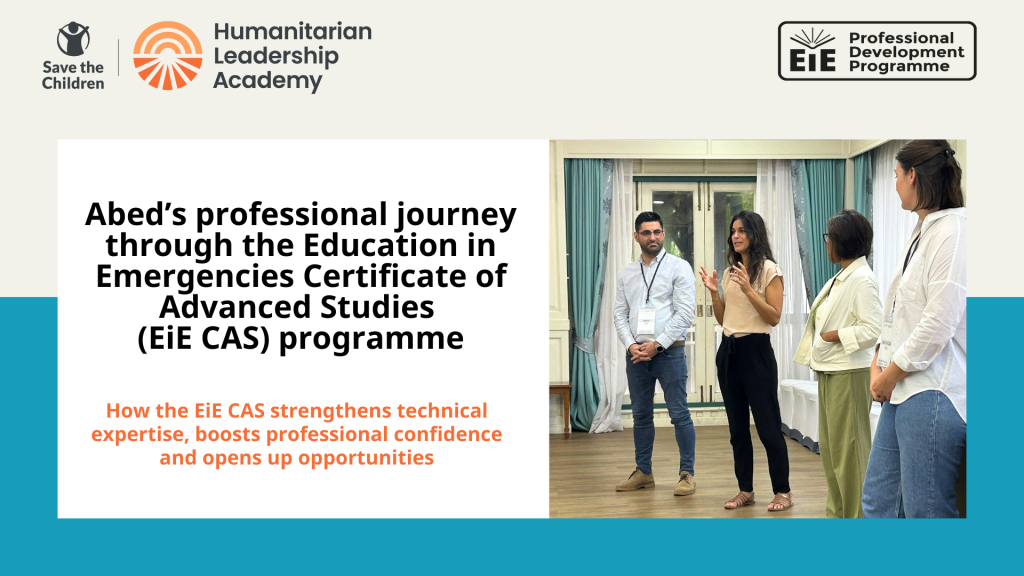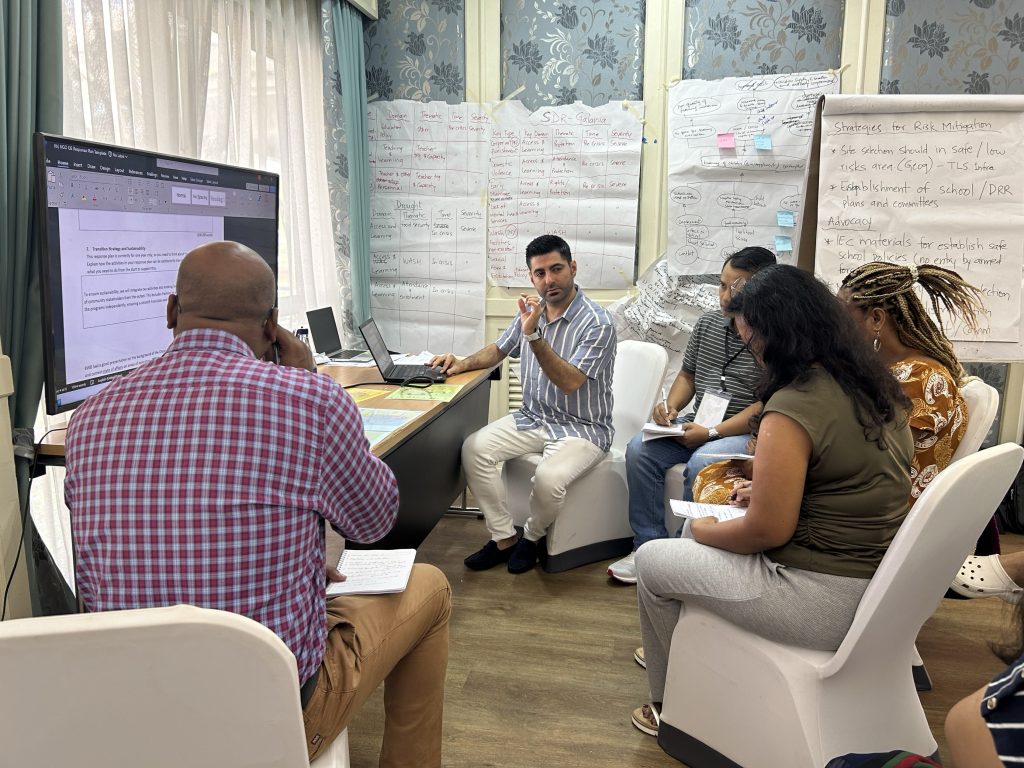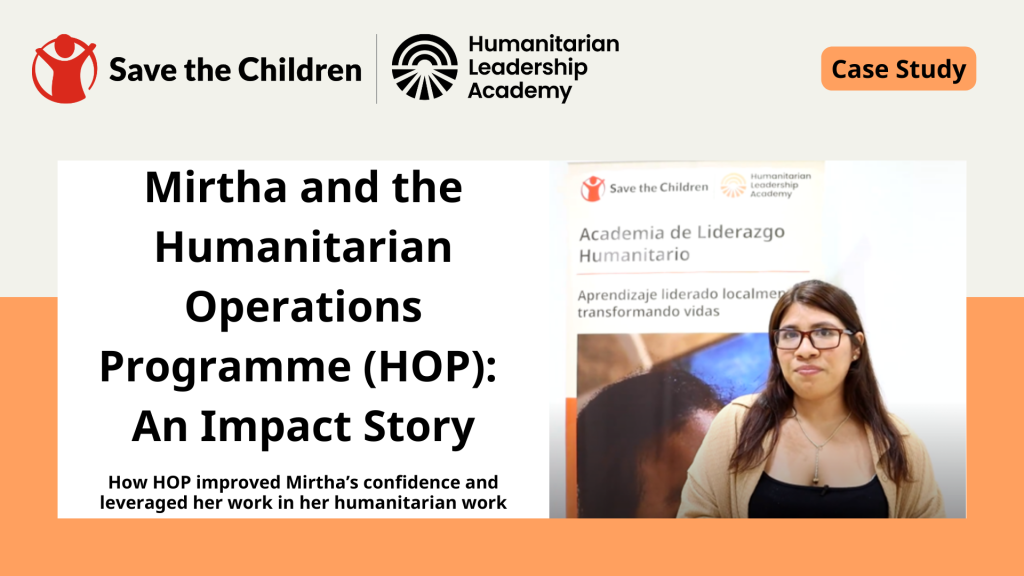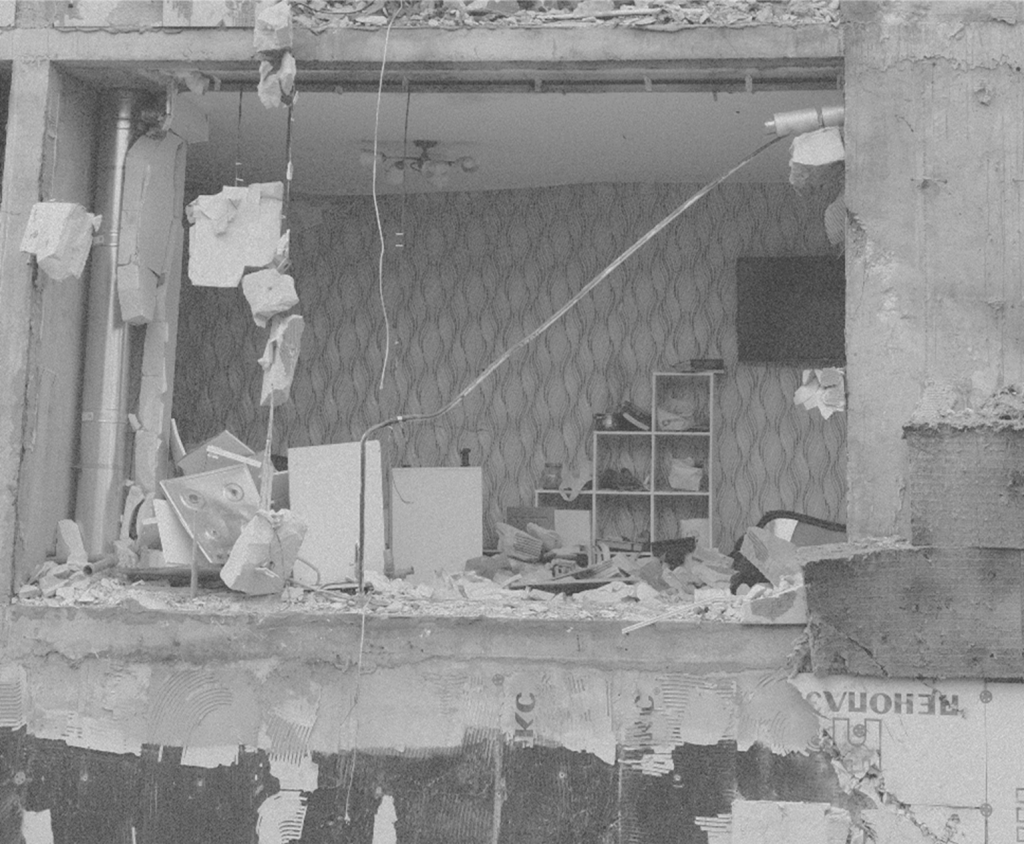Discover how the EiE CAS programme strengthens technical expertise, boosts professional confidence and opens up opportunities.
Education is a lifesaving intervention, offering stability and hope for children and their families during times of crisis. The Humanitarian Leadership Academy’s Education in Emergencies Certificate of Advanced Studies (EiE CAS) programme, accredited by the University of Geneva, aims to equip mid-level and senior practitioners with skills to design, implement, and lead high quality EiE initiatives.
This case study and accompanying video interview highlight the transformative impact that the EiE CAS programme has had on Abed, an Education Specialist with Save the Children International based in Türkiye who enrolled on the programme in 2022.

For Abed, these positive impacts include deepened technical expertise, strengthened communication skills, an expanded network and increased development opportunities, as well as playing a pivotal role in shaping his continuing academic pathway.
Abed’s progress illustrates the EiE CAS programme’s potential to create long-lasting impacts on its participants. The EiE CAS programme not only helped Abed become a more skilled and confident practitioner but also enabled him to train, guide and mentor others, strengthening capacity in the sector.
Since 2018, 313 students have graduated from the EiE CAS and have trained an additional 1,849 learners through their final skills sharing assignment. There are 124 students enrolled on the programme in 2024.
Keywords: Education in Emergencies, humanitarian response, capacity strengthening, localisation, training, higher education, technical expertise, Global Education Cluster, MENA region, Asia Pacific region, impact, People’s Postcode Lottery Education Trust.
Interview with Abed
Watch the accompanying video interview with Abed which was recorded during the EiE CAS Asia residential training in Bangkok

You may also be interested in
Education in Emergencies Professional Development Programme
Case study: Humanitarian Operations Programme in Latin America and Caribbean – Mirtha’s experience with HOP
Case study: Humanitarian Operations Programme training in Poland


